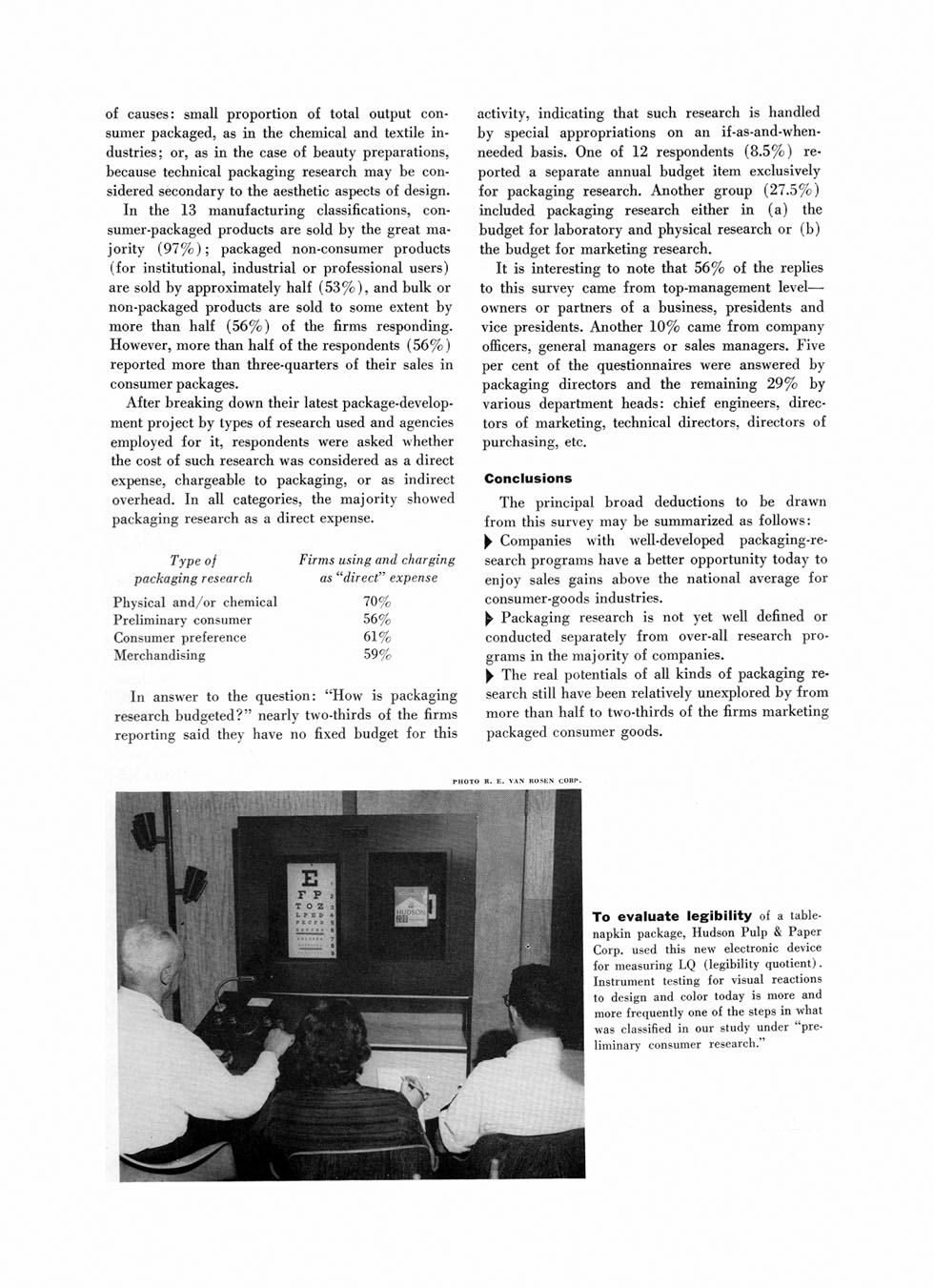


of causes: small proportion of total output consumer packaged, as in the chemical and textile industries; or, as in the case of beauty preparations, because technical packaging research may be considered secondary to the aesthetic aspects of design.
In the 13 manufacturing classifications, consumer-packaged products are sold by the great majority (97%); packaged non-consumer products (for institutional, industrial or professional users) are sold by approximately half (53%), and bulk or non-packaged products are sold to some extent by more than half (56%) of the firms responding. However, more than half of the respondents (56%) reported more than three-quarters of their sales in consumer packages.
After breaking down their latest package-development project by types of research used and agencies employed for it, respondents were asked whether the cost of such research was considered as a direct expense, chargeable to packaging, or as indirect overhead. In all categories, the majority showed packaging research as a direct expense.
Type of
packaging research
Physical and/or chemical Preliminary consumer Consumer preference Merchandising
Firms using and charging as "direct"ť expense
70%
56%
61%
59%
In answer to the question: "How is packaging research budgeted?"ť nearly two-thirds of the firms reporting said they have no fixed budget for this
activity, indicating that such research is handled by special appropriations on an if-as-and-when-needed basis. One of 12 respondents (8.5%) reported a separate annual budget item exclusively for packaging research. Another group (27.5%) included packaging research either in (a) the budget for laboratory and physical research or (b) the budget for marketing research.
It is interesting to note that 56% of the replies to this survey came from top-management level owners or partners of a business, presidents and vice presidents. Another 10% came from company officers, general managers or sales managers. Five per cent of the questionnaires were answered by packaging directors and the remaining 29% by various department heads: chief engineers, directors of marketing, technical directors, directors of purchasing, etc.
Conclusions
The principal broad deductions to be drawn from this survey may be summarized as follows:
^ Companies with well-developed packaging-research programs have a better opportunity today to enjoy sales gains above the national average for consumer-goods industries.
^ Packaging research is not yet well defined or conducted separately from over-all research programs in the maj ority of companies.
^ The real potentials of all kinds of packaging research still have been relatively unexplored by from more than half to two-thirds of the firms marketing packaged consumer goods.
PHOTO R. E. VAN ROSEN CORP.
To evaluate legibility of a table-napkin package, Hudson Pulp & Paper Corp. used this new electronic device for measuring LQ (legibility quotient). Instrument testing for visual reactions to design and color today is more and more frequently one of the steps in what was classified in our study under "preliminary consumer research. '